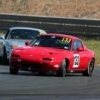How Often To Change Brake Fluid?
Announcements
-
Similar Content
-
Latest Posts
-
And be prepared to surrender low/midrange torque.
-
By Godzilla_xs2 · Posted
hey everyone! New to the site and cant wait to meet new skyline owners -
By Godzilla_xs2 · Posted
Hello. Were you able to find how to check this issue. I am having the same issue on my s2 base r34 gtr






Recommended Posts
Create an account or sign in to comment
You need to be a member in order to leave a comment
Create an account
Sign up for a new account in our community. It's easy!
Register a new accountSign in
Already have an account? Sign in here.
Sign In Now